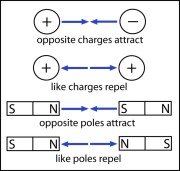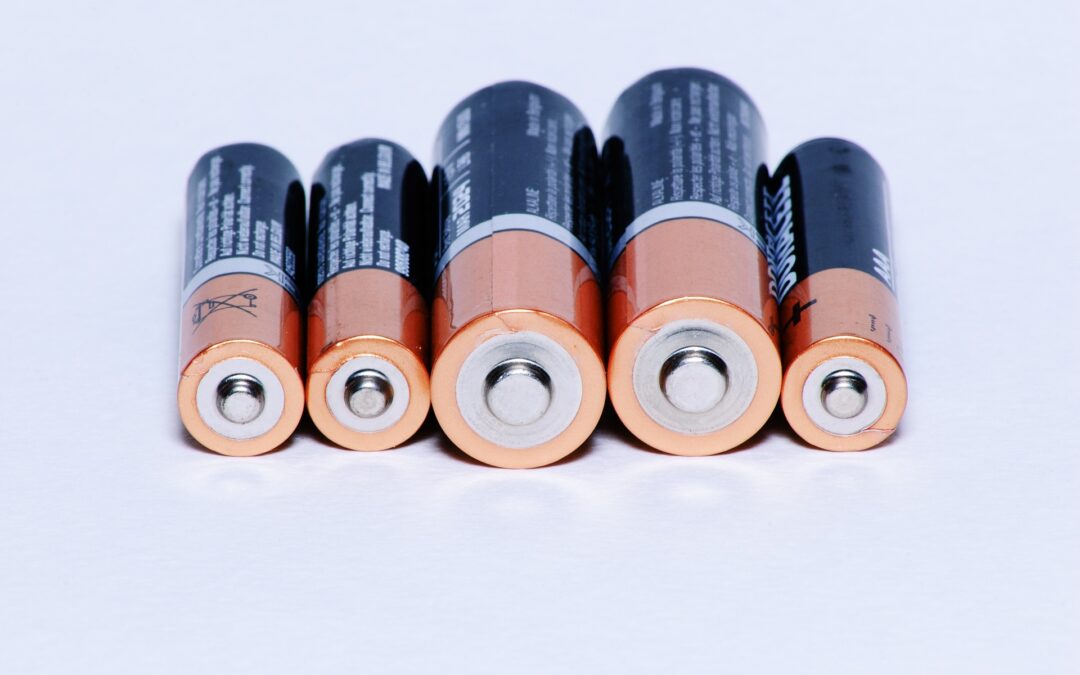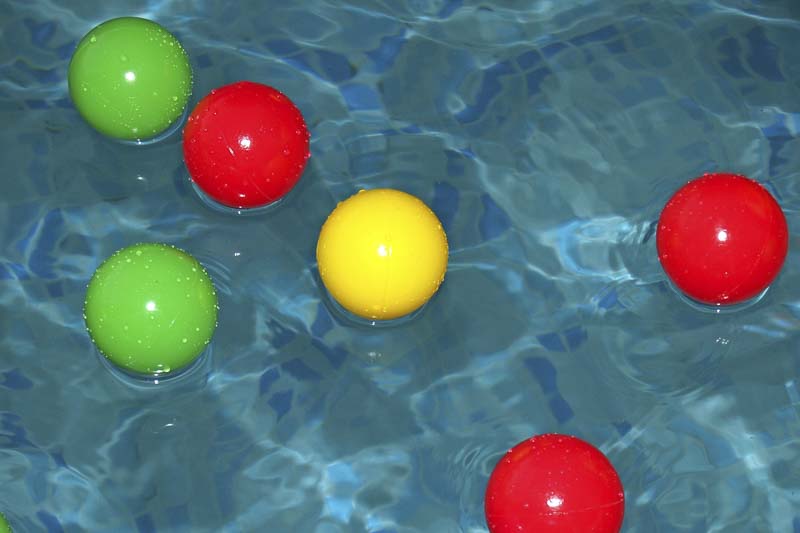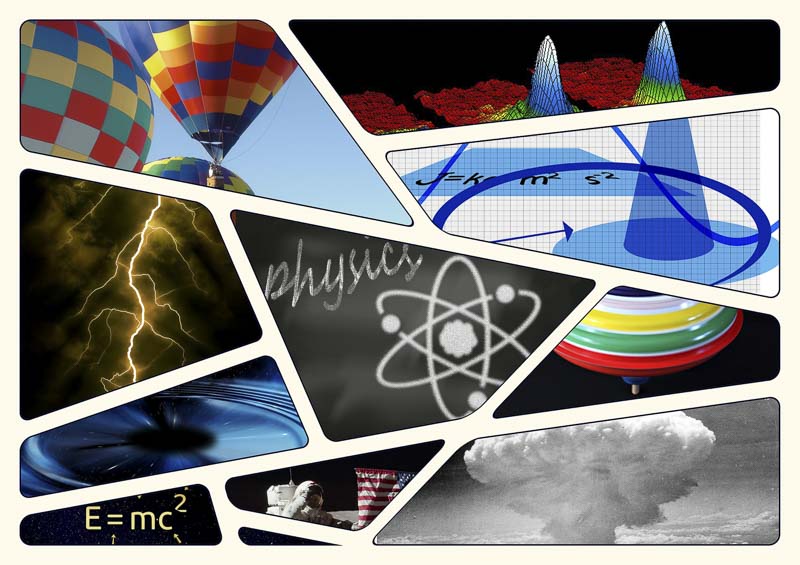
One of the main principles behind electricity and magnetism is that the movement of charged particles in the same direction will result in a magnetic force. When a wire is hooked up to a battery, negatively charged particles (electrons) flow away from the negative terminal of the battery toward the positive end, because opposite charges attract each other, while like (similar) charges repel each other. This flow of electrons through wire is electric current, and it produces a magnetic force. In a magnet, atoms are lined up so that the negatively charged electrons are all spinning in the same direction. Like electric current, the movement of the electrons creates magnetic force. The way the atoms are lined up creates two different poles in the magnet, a north pole and a south pole. As with electrical charges, opposite poles attract each other, while like poles repel each other.
The space around an electrical current or magnet in which the magnetic force is felt is called a magnetic field. Many scientists have theorized that the earth’s magnetic field is produced by electric currents caused by molten iron at the core of the Earth. You can make a picture of a magnetic field, using a piece of paper or clear plastic sheet, a magnet, and iron filings. Place the magnet directly underneath the sheet of paper, and then carefully sprinkle the iron filings over the top of the paper. The iron filings will shift into the pattern of the magnet’s magnetic field. If you have more than one shape of magnet (horseshoe, bar, ring, cylindrical, or disc), you might want to try the experiment again with a different shape, to observe how the magnetic fields differ for each magnet. You can also place two magnets close to each other and observe how multiple magnets affect the field.
If you’ve ever tried to use a magnet to attract a piece of plastic, you know that magnetic force doesn’t work on everything! When a magnet attracts an object, such as a paperclip, it causes some of the atoms in the paperclip to line up. In other words, the paperclip becomes a magnet when it is attracted by a magnet. But in most materials, the atomic structure makes it impossible for the atoms to line up like the atoms in a magnet. Materials that can be easily attracted by magnets, like iron and steel, are called ferromagnetic.

In a permanent magnet, like a bar magnet or a horseshoe magnet, the atoms stay lined up so that the electrons always move in the same direction and the magnet continues to attract ferromagnetic material (though high heat or hammering can make a permanent magnet lose its magnetism). In a temporary magnet, the atoms line up for a short time, and then move around, causing the magnet to lose magnetism. You can easily make your own temporary magnet! Straighten a paperclip so you have a long metal rod. Rub a bar magnet along this rod from top to bottom several times (rub the rod in one direction only!). As you do this, the magnetic force from the bar magnet causes the atoms in the paperclip to line up, making it a magnet that is attracted to the bar magnet. Try picking up another paperclip with your magnetized rod. (If you can’t, rub the rod with the magnet a few more times. The more atoms that are lined up, the stronger the magnet will be.) Now drop both paperclips on a hard floor. Try using the straightened paperclip to pick the other one up again. This time it probably won’t work, because when you dropped them you changed the orientation of the atoms. They are no longer lined up, so the metal is no longer magnetic.
Your magnetized paperclip was a very weak temporary magnet, but an electromagnet is a temporary magnet that can be very strong. It consists of tightly coiled wire (called a solenoid) wrapped around a ferromagnetic core. When the wire is hooked up to a battery and an electrical current flows through it, it creates a magnetic force. This magnetizes the ferromagnetic core, and the two magnetic forces together create a strong magnet. Industrial electromagnets can lift cars and other huge objects! As soon as the electric current stops flowing through the wire, the electromagnet loses its magnetism.
Magnets are fun to play with and they work great for sticking pictures on your fridge, but you may not realize what an important role they play in your daily life! Electric motors work because of the interaction of permanent magnets and electromagnets. In a motor, an electromagnet spins as it is attracted and repelled by the poles of a permanent magnet surrounding it. Without these magnets, you wouldn’t have a working refrigerator, blender, fan, VCR, vacuum cleaner, washing machine, or hair dryer! Take a walk through your house and make a list of everything that uses a motor – without magnets none of these things would work. Even items that don’t use motors depend on magnets. Doorbells, for example, usually have an electromagnet that attracts a small hammer. When you push the button an electric current is established, starting up the electromagnet. As the hammer moves toward the electromagnet, the circuit is broken and a spring pulls the hammer back to strike the bell.





